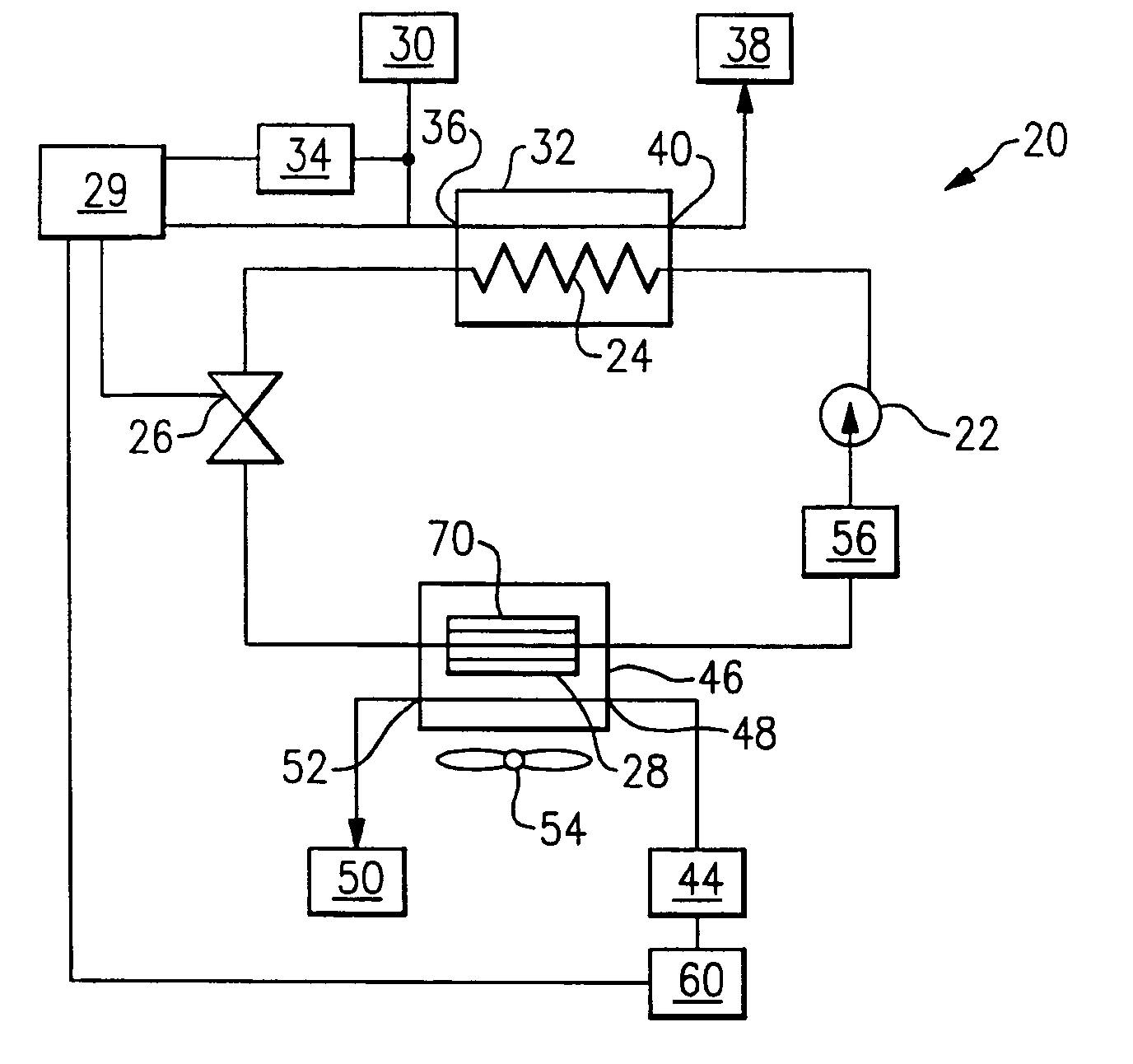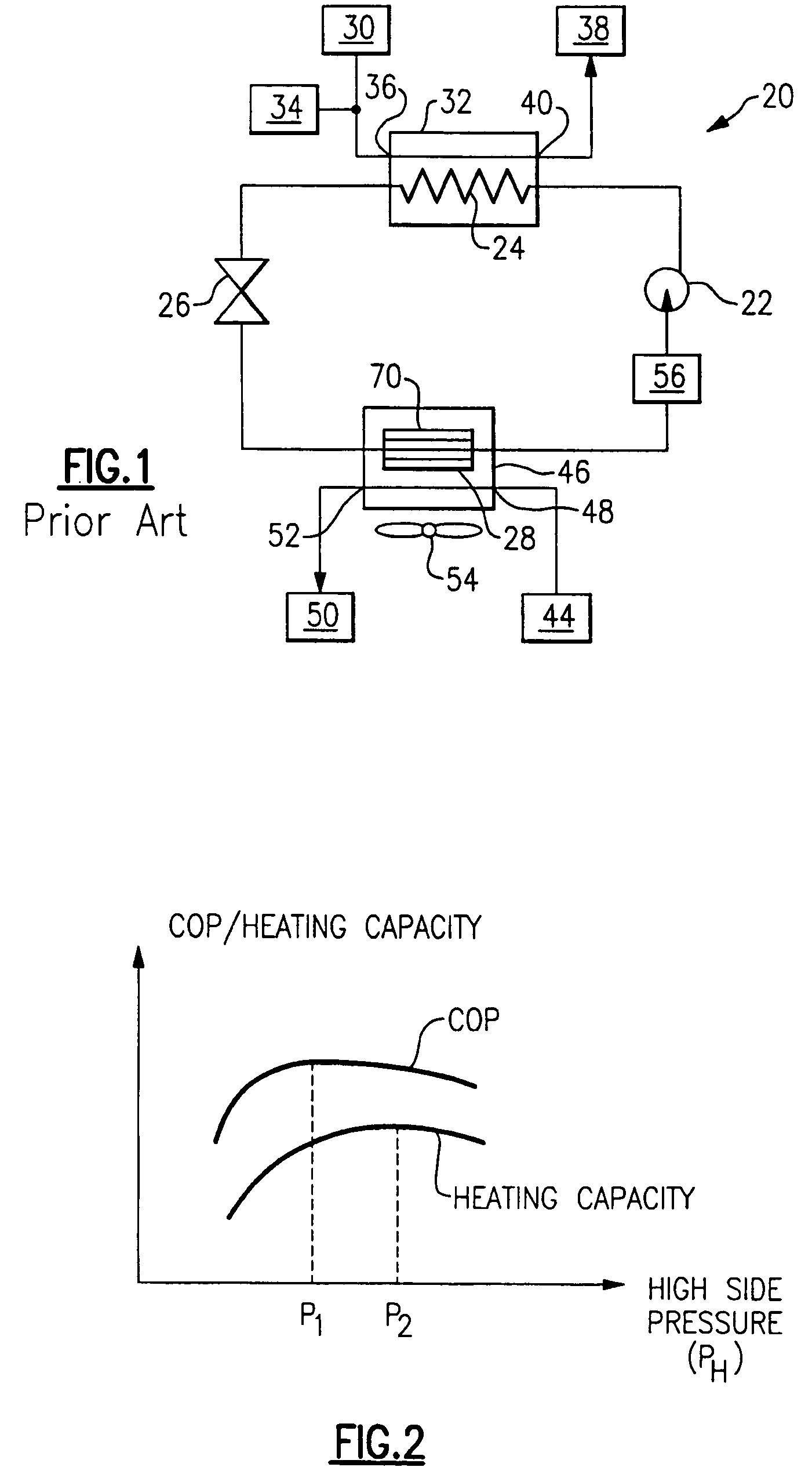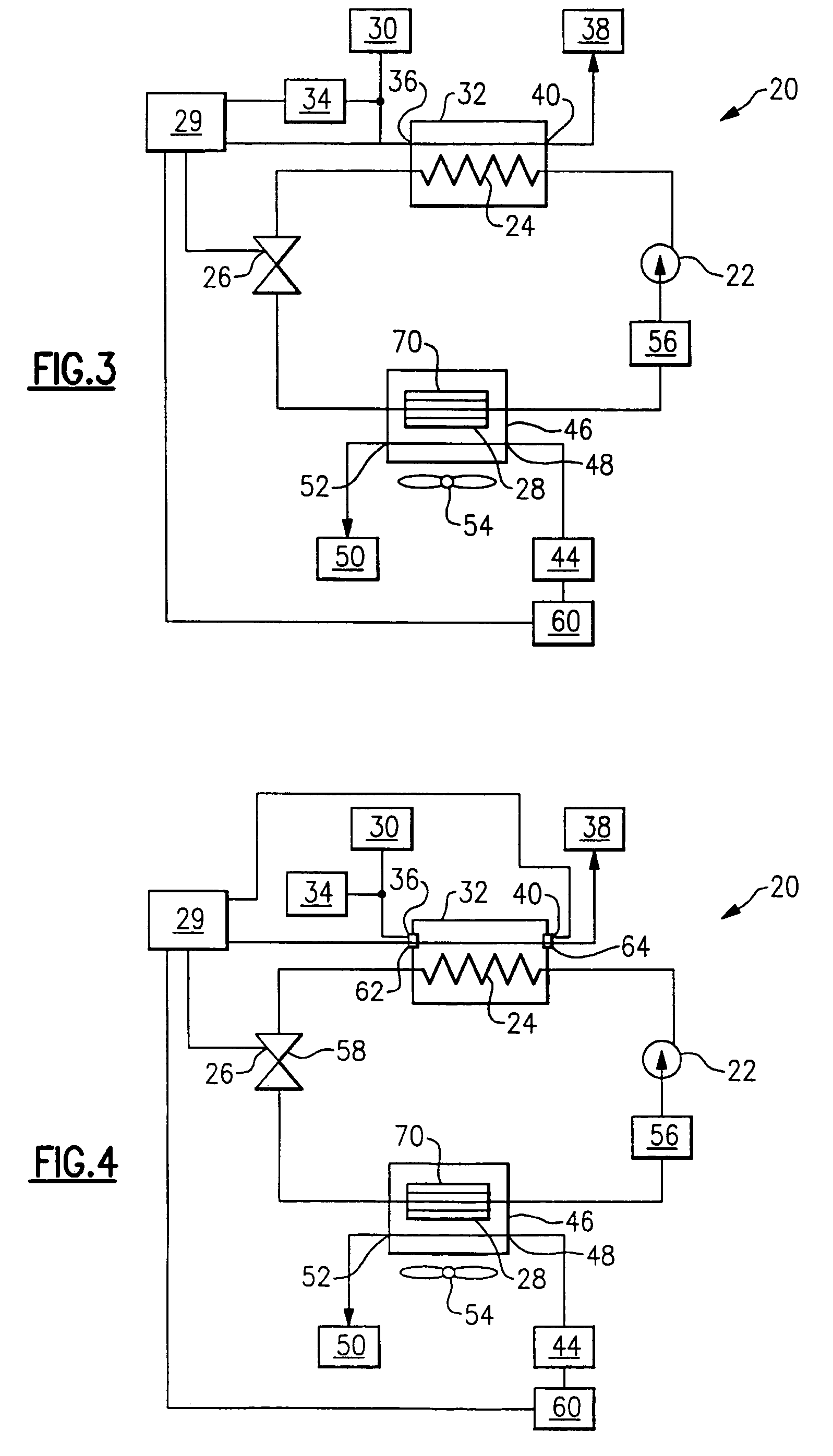Transcritical vapor compression optimization through maximization of heating capacity
a technology of vapor compression system and heating capacity, applied in the field of system and method of optimizing a transcritical vapor compression system, can solve the problems of oversized vapor compression system to achieve sufficient heating capacity, insensitive to high performance, and inconvenient operation, so as to achieve the effect of optimizing the heating capacity of the system
- Summary
- Abstract
- Description
- Claims
- Application Information
AI Technical Summary
Benefits of technology
Problems solved by technology
Method used
Image
Examples
first embodiment
[0028]FIG. 3 illustrates the present invention. The optimal heating capacity of the vapor compression system 20 is determined by measuring the current required to operate the water pump 34. The water pump 34 pumps the cooled fluid medium 30 through the gas cooler 24 at a flowrate. In the gas cooler 24, the cooled fluid medium 30 accepts heat from the refrigerant exiting the compressor 22. The higher the current required to operate the water pump 34, the higher the flowrate of cooled fluid medium 30 by the water pump 34, the higher the heat transfer between the fluid medium 30 and the refrigerant in the gas cooler 24, and the higher the heating capacity. That is, as the current to operate the water pump 34 increases, the system heating capacity increases.
[0029]A controller 29 regulates the system 20. At a given high side pressure, the heating capacity can be calculated based on the current measured to operate the water pump 34. The controller 29 stores the calculated heating capacity...
second embodiment
[0031]FIG. 4 illustrates the present invention. Three system characteristics are measured to determine the optimal system heating capacity pressure P2. A water inlet temperature sensor 62 detects a water inlet temperature of the fluid medium 30 entering the gas cooler 24, a water outlet temperature sensor 64 detects a water outlet temperature of the water 38 exiting the gas cooler 24, and an ambient air temperature sensor 60 detects a heated fluid medium temperature, which in this example is an ambient air 44 temperature. The three temperatures detected by sensors 60, 62, and 64 are communicated to and collected by the controller 29.
[0032]Optimal high side pressure values for various temperatures are programmed and stored in the controller 29. Based on the detected temperatures, an optimal high side pressure is determined. Alternately, the optimal size or percentage of the orifice of the expansion device 26 is determined based on the detected temperatures. Alternately, the control c...
PUM
 Login to View More
Login to View More Abstract
Description
Claims
Application Information
 Login to View More
Login to View More - R&D
- Intellectual Property
- Life Sciences
- Materials
- Tech Scout
- Unparalleled Data Quality
- Higher Quality Content
- 60% Fewer Hallucinations
Browse by: Latest US Patents, China's latest patents, Technical Efficacy Thesaurus, Application Domain, Technology Topic, Popular Technical Reports.
© 2025 PatSnap. All rights reserved.Legal|Privacy policy|Modern Slavery Act Transparency Statement|Sitemap|About US| Contact US: help@patsnap.com



